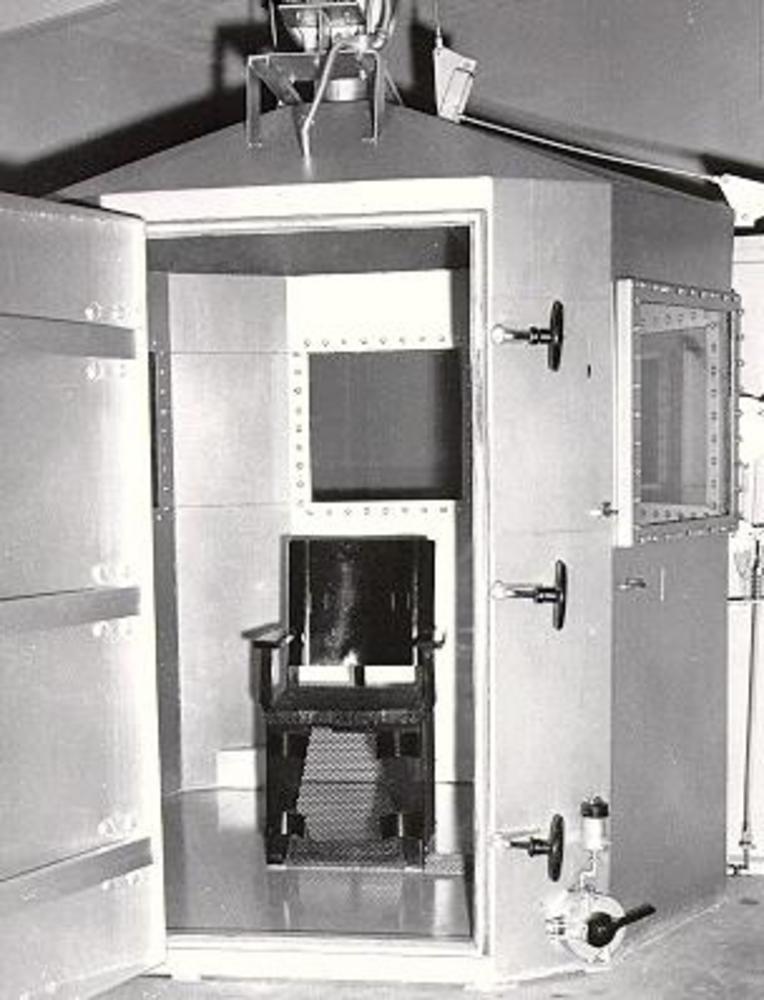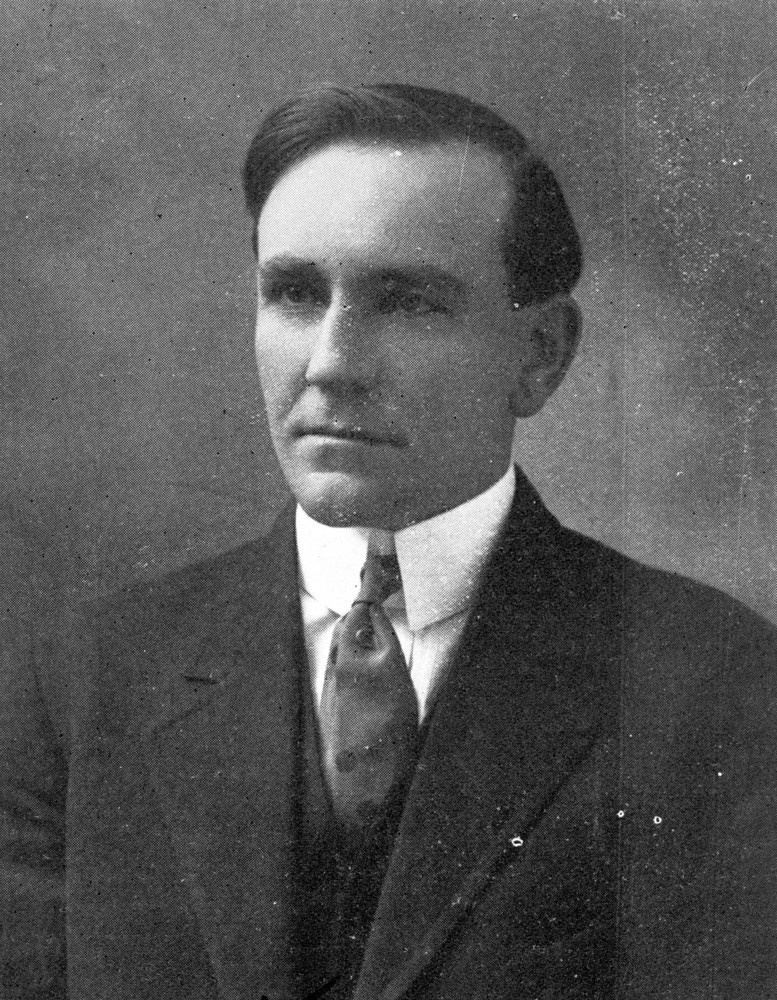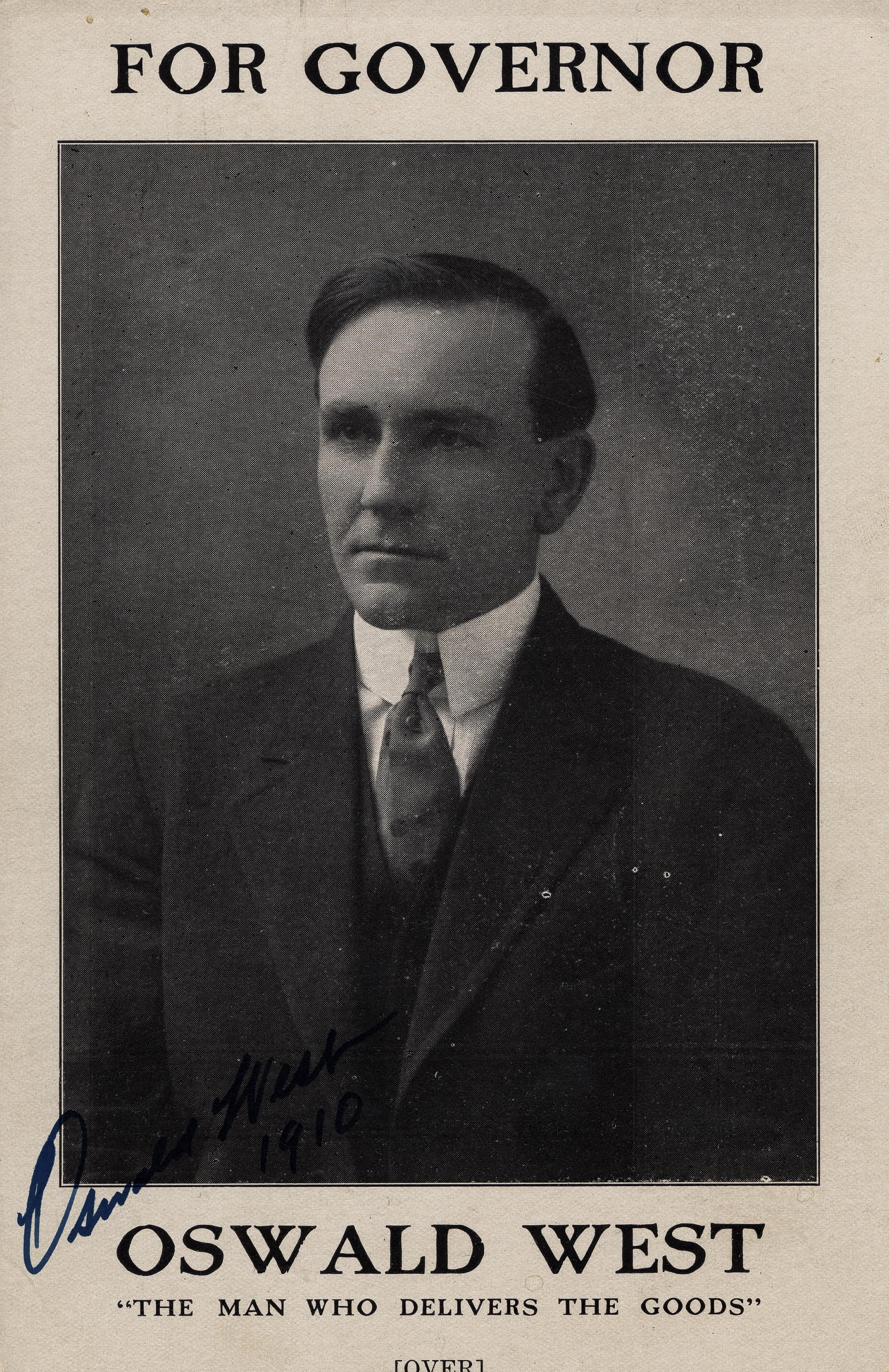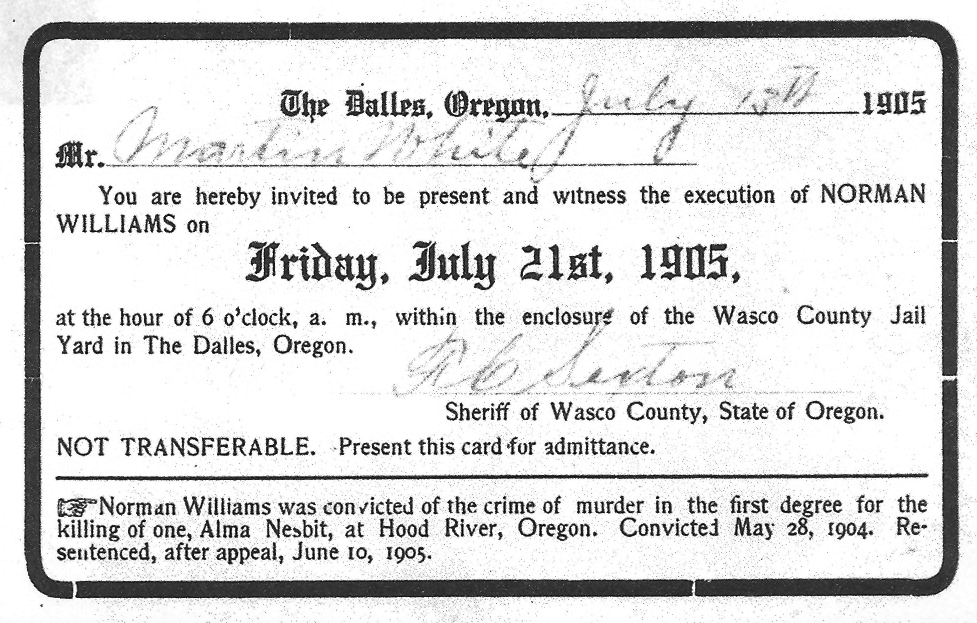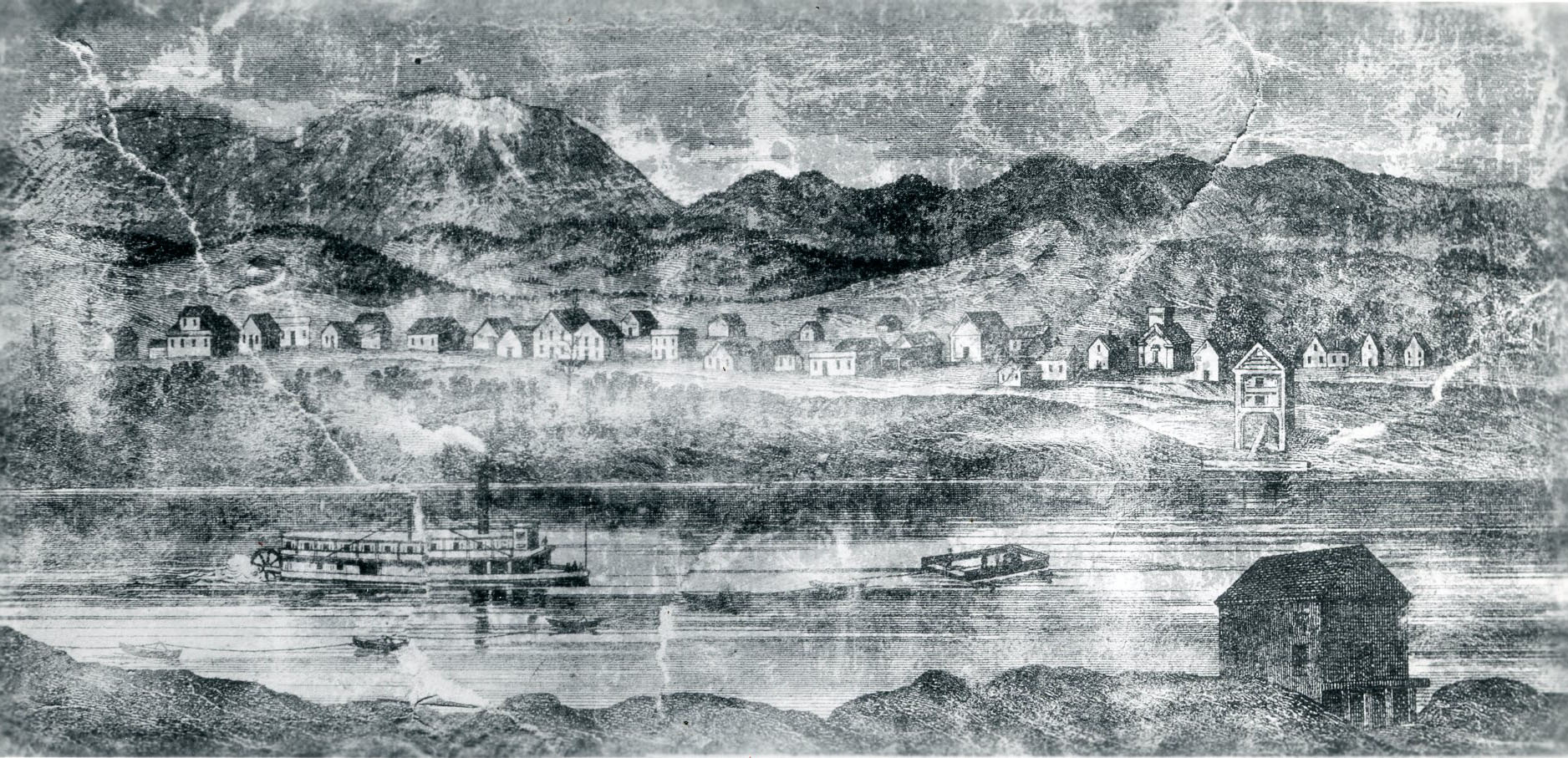Oregon has had a death penalty for most of its history as a state, though it executed only two people since 1963, and both of those executions (in 1996 and 1997) were of men who gave up their rights early in the appellate process.
The history of Oregon's death penalty is suffused with interesting and tortuous twists, many of which have been effected by a vote of the people through the initiative petition process. Oregon's death penalty for what was then called first-degree murder reaches back to the time of provisional (1843-1849) and territorial (1849-1859) governments. Death penalty authorization was statutory and not constitutional. From 1859 to 1903, executions were carried out at the county level.
Executions in America in the late nineteenth century were popular spectacles. Tickets were sold, guards were bribed, and newspapers covered in detail the last moments of the condemned person's life. A statute passed in 1874 required that executions be performed on the grounds of the county courthouse. After the carnival-like atmosphere during two public executions in Portland in 1902, the Oregon legislature required that executions be done out of public sight at the Oregon State Penitentiary in Salem.
The first effort to abolish the death penalty in Oregon, through an initiative petition in 1912, failed by a 20 percent margin (60 percent opposed). A spate of executions in 1913-1914 under Governor Oswald West, the only Oregon governor who had vowed never to execute anyone under his watch, led to a successful initiative petition to repeal the penalty in 1914. From 1914 to 1920, Oregon had no death penalty.
Efforts to abolish the penalty were not launched again until the late 1950s, when both gubernatorial candidates, Robert Holmes and Mark O. Hatfield, were staunch opponents of capital punishment. Hatfield, elected in 1958, authorized the final Oregon execution until 1996 when he refused to intervene in a 1963 case. In November 1964, an initiative petition to eliminate capital punishment passed by a 60-40 percent margin.
Efforts to restore the death penalty in Oregon surfaced in the early 1970s, but it was not until 1978 that Oregon voters again restored capital punishment (by 65 percent). The Oregon Supreme Court threw out the measure in January 1981, but the people voted to reinstate the penalty in November 1984, approving (by 75 percent) a statute modeled on a Texas law. Since then, there have been no serious attempts to bring a vote to the people on this issue.
When the Oregon death penalty was presented for popular vote in 1978 and 1984, proponents argued that the death penalty would be a less expensive and quicker alternative than other judicial options for those who committed aggravated murder. ("Aggravated murder" replaced the traditional "first-degree" murder in Oregon in 1977.) The passage of Oregon's post-conviction relief statute in 1959, however, opened the door to a series of ten appeals for a person sentenced to death before execution could take place. It was not until the 1990s, five years after the 1984 statute had been declared inadequate by the U.S. Supreme Court (in a Texas case), that the cost of the Oregon death penalty were examined seriously. One study claimed that the costs of executing a person in Oregon could be as much as five times more than putting a person in prison for life without the possibility of parole.
In 2011, Governor John Kitzhaber did not enforce the death penalty and Governor Kate Brown continued that policy when she became Governor in 2015. In 2022, seventeen people were on death row in Oregon. On December 14, 2022, Governor Kate Brown commuted the sentences of all seventeen prisoners on death row and resentenced them to life in prison without parole.
-
![]()
Oregon's Gas Chamber.
Courtesy of Oregon Department of Corrections, Salem
-
![]()
Governor Oswald West (1873-1960), an opponent of the death penalty.
Oreg. Hist. Soc. Research Library, bb002796
Related Entries
-
![Oregon State Penitentiary]()
Oregon State Penitentiary
The Oregon State Penitentiary, Oregon's only maximum-security prison, s…
-
![Oswald D. West (1873-1960)]()
Oswald D. West (1873-1960)
Oswald D. West served as Oregon's fourteenth governor, between 1911 and…
-
![State of Oregon v. Norman Williams]()
State of Oregon v. Norman Williams
In May 1904, in State of Oregon v. Norman Williams, an Oregon jury made…
-
![State of Oregon v. Phillip George]()
State of Oregon v. Phillip George
Oregon’s reputation for showing respect for the common citizen and indi…
Map This on the Oregon History WayFinder
The Oregon History Wayfinder is an interactive map that identifies significant places, people, and events in Oregon history.
Further Reading
Goeres-Gardner, Diane L. Necktie Parties: Legal Executions in Oregon, 1859-1905. Caldwell, Idaho: Caxton Press, 2005.
Long, William R. A Tortured History: The Story of Capital Punishment in Oregon. Eugene, Ore.: OCDLA, 2001.

